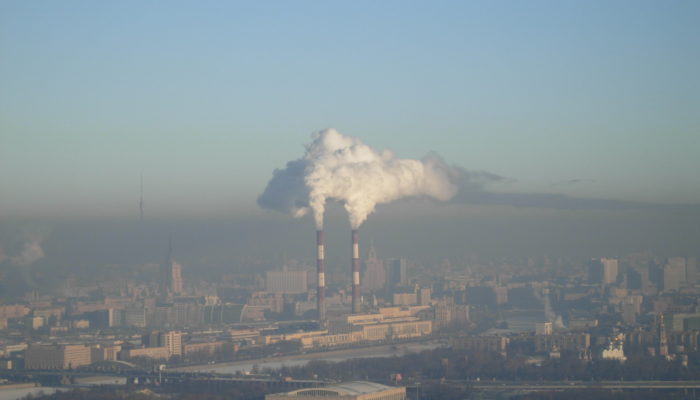
120 years ago in 1901, Swedish meteorologist Nils Ekholm used the term ‘greenhouse’ to describe the heating effect that a planet’s atmosphere has on the surface temperature of the planet, the first time that this now much-used and abused metaphor was published. He wrote:
“The atmosphere plays a very important part of a double character as to the temperature at the earth’s surface, of which the one was first pointed out by Fourier, the other by Tyndall. Firstly, the atmosphere may act like the glass of a green-house, letting through the light rays of the sun relatively easily, and absorbing a great part of the dark rays emitted from the ground, and it thereby may raise the mean temperature of the earth’s surface. Secondly, the atmosphere acts as a heat store placed between the relatively warm ground and the cold space, and thereby lessens in a high degree the annual, diurnal, and local variations of the temperature.”
His description of the interaction of heat and light from the sun with our atmosphere was a useful metaphor for how the atmosphere can (and does) influence our planet. At the time, the calculation of the impact of atmospheric gases on the temperature of any planet—and the interaction of atmosphere and climate—was more of a mathematical curiosity than a critical societal issue. But as we’ve experienced during the last 120 years, the effects of not just atmospheric climate change, but also anthropogenic or human-caused climate change, have become irrefutable.
As a result, we now have many other terms that we use to describe this issue, from the original ‘greenhouse effect’ to ‘global warming’ to ‘climate change’. We have changed our use of these terms not necessarily because of their scientific definitions, but because of the cultural and societal connotations. Many of us learned about the greenhouse effect in school, where it is typically defined as:
“the gradual warming of the Earth because of heat trapped by carbon dioxide and other gases in the atmosphere”.
One of the outcomes of the greenhouse effect is that it increases the average global temperature, and when this happens in significant, sustained, and measurable ways, we term this ‘global warming’. Between the 1980s and early 2000’s, ‘global warming’ was the preferred term to describe the environmental changes our planet was experiencing. However, around the turn of the millenimum, it became apparent that this phrase wasn’t effective in communicating what was actually happening—namely in conversations around humanity’s effects on our planet. Both the ‘greenhouse effect’ and ‘global warming’ are not the currently preferred ways to describe the environmental crisis, because they both describe only one, simplified aspect of the complex Earth system that humans influence to cause anthropogenic climate change. Even ‘global warming’, which almost always refers explicitly to human-induced warming of the Earth system, is sometimes seen as an unhelpful term, as atmospheric climate change doesn’t always manifest as warming. Scientists now have a much better understanding of the diverse and devastating ways that climate change can impact our planet.
In a 1975 article in Science, which is often credited as being the first popular use of the term ‘climate change’ to mean human-caused environmental changes, Wallace Broeker wrote:
“Global warming: the increase in Earth’s average surface temperature due to rising levels of greenhouse gases. Climate change: a long-term change in the Earth’s climate, or of a region on Earth.”
This distinction reflects the reason why we have shifted the public discourse from ‘global warming’ to ‘climate change’: climate change is something that will affect us all, whether or not we actually see or experience the impacts of global warming.
It is likely that the terms we use to communicate our changing climate will also continue to change, as evidenced when in 2019, the Oxford dictionary chose ‘climate emergency’ as its Word of the Year. In addition, climate activist Greta Thunberg has frequently used the metaphor of a house on fire when communicating with world political leaders. So perhaps these phrases will replace climate change as being a more societally and scientifically accurate way to discuss the impact of gases in the atmosphere on our global climate, in the same way that Nils Ekholm once chose the greenhouse metaphor.
During the last 120 years, scientific research has moved from questioning whether human activity could ever impact it, to how we as a global society can combat the escalating climate crisis of our own creation. The way we use language around climate science has and must reflect this change, as we as scientists try to find new ways to effectively communicate the scientific and environmental emergency we see developing before our eyes.






Chris King
If you Google ‘greenhouse effect’ and Images, Hazel – your will find many diagrams that reinforce the misconception held by many people including teachers and pupils, that there is a layer in the atmosphere (like greenhouse glass) that reflects the heat. It is a shame that many school textbooks, in trying to present simple diagrams, also reinforce this misconception.
Great piece!
Chris.
Costas Varotsos
Ιt is a serious shortcoming not to mention the substantial work done by Svante Arrhenius (1859-1927).
See for example:
Arrhenius, S., 1896(a). Nature’s heat usage. Nordisk Tidskrift 14, 121-130 (In Swedish).
Arrhenius, S., 1896(b). On the influence of carbonic acid in the air upon the temperature of the ground. The London, Edinburgh and Dublin Philosophical Magazine and Journal of Science 41, 237-276.
Arrhenius, S.(1903) Lehrbuch der kosmischen physik II. Meteorologie. Hirzel, Leipzig.
Arrhenius, S., (1906) Vdrldarnas utveckling. Gebers, Stockholm (1906). English translation by H. Bems: Worlds in the Making: The Evolution of the Universe. Harpers, New York and London (1908).